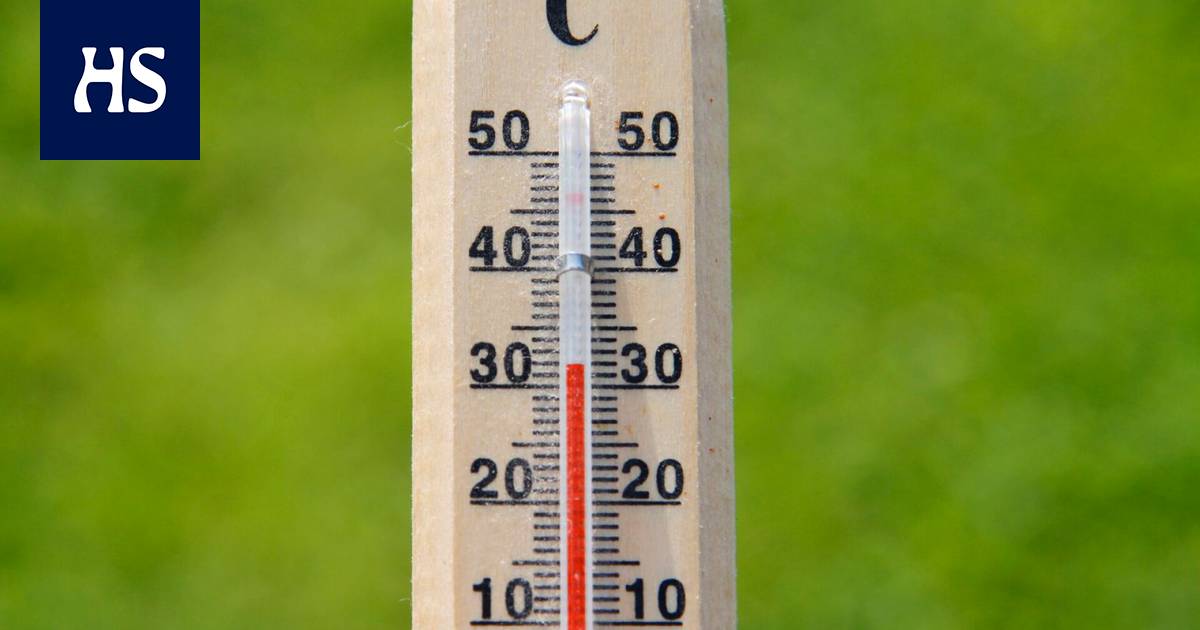It would be best for the body when we had eternal autumn weather and + 14 degrees. Mortality begins to increase as the temperature rises from this. In Helsinki, the thermal disadvantages are more pronounced.
Finns have been waiting for summer and heat as the moon rises – and it ‘s wonderful to have sun and warmth at the end of a long winter.
However, studies show that too warm weather is not good for humans. Heat strains the body in many different ways and also affects the ability of the brain to function, such as alertness. As milder impairments, ability to work, concentration, and memory deteriorate, and at worst, heat causes death. The disadvantages are the hotter it is.
“When the weather temperature is +14 degrees, we have the lowest mortality. As soon as we get over it, the mortality rate starts to rise, ”says the professor of public health science Jouni Jaakkola From the University of Oulu.
It would be best for the body to end the heat and replace it with an eternal autumn.
This is explained by the fact that Finns are not used to heat.
“For example, in Mediterranean countries such as Spain, the optimum temperature is around + 22–25 degrees, and in all the hottest countries closer to +30 degrees,” says Jaakkola.
In the cities The disadvantages of heat are emphasized, and that is why heat is particularly difficult in Helsinki, for example.
“Let’s talk about the heat island phenomenon. Cities are warmer than the surrounding rural areas because they have more asphalt, heat-collecting buildings, vehicles and other heat-generating activities, ”says a leading researcher at the National Institute for Health and Welfare (THL). Timo Lanki.
According to Lang, 200 to 400 deaths occur each year during the heat waves, which are caused by the heat.
“It has been known for ages and times that hell is a nuisance. But no matter how big the health risk, there is more recent information about it,” says Lanki.
According to Lang, the turning point in the study of heat damage was 2003. At that time, southern Europe was hit by a severe heat wave, with 15,000 people dying in a couple of weeks in France alone.
“After that, the research began in Europe and Finland with a completely new intensity. In European countries, heat preparedness began, and the first guidelines for heat and heat were prepared in Finland as well,” says Lanki.
As global warming continues, premature deaths will also increase, says Jaakkola.
“The number and intensity of heat cycles is increasing. There have been global predictions that even in our climate, heat-related mortality will increase by 200 to 400 percent by the end of the century if global temperatures rise by four degrees. ”
Hell health risks are largely explained by the fact that heat exacerbates many diseases, more commonly cardiovascular and respiratory diseases. Death can come unexpectedly even in the form of a stroke.
However, during heatwaves, mortality also increases in other disease groups, such as those with mental disorders and neurological diseases.
“There are many mechanisms, and one factor that can cause sensitization can be drugs: for example, some antidepressants affect the temperature balance and the body’s ability to sense heat,” says Lanki.
In hot weather, night temperatures are also high and sleeping may become more difficult.
“More aggressive behavior has been observed in the heat. This is affected if the rest decreases and the sleep rhythm suffers, ”says Jaakkola.
Single the hot day may not yet be harmful even to those at risk. However, the more hot days in a row, the more the risks increase.
It also has an effect on what time of year the heat wave comes.
“If it is obtained early, our physiology has not yet adapted to the heat, resulting in higher mortality and other inconveniences,” Lanki says.
The body physiological adaptability begins to decline gradually in middle age, says Jaakkola. For this reason, parents who have previously enjoyed the heat may find that too much heat is painful.
However, if a Finn moves to Spain, for example, he will slowly get used to the warmer environment. For example, sweating changes.
“Physiological adjustment takes place within two weeks. An important part of adaptation is also that we learn to operate in a hotter environment: we protect ourselves from the heat and do not necessarily seek the scorching sun as actively as before, ”says Jaakkola.
#Helle #professor #tells #difficult #truth #Finns #characteristic #temperature









